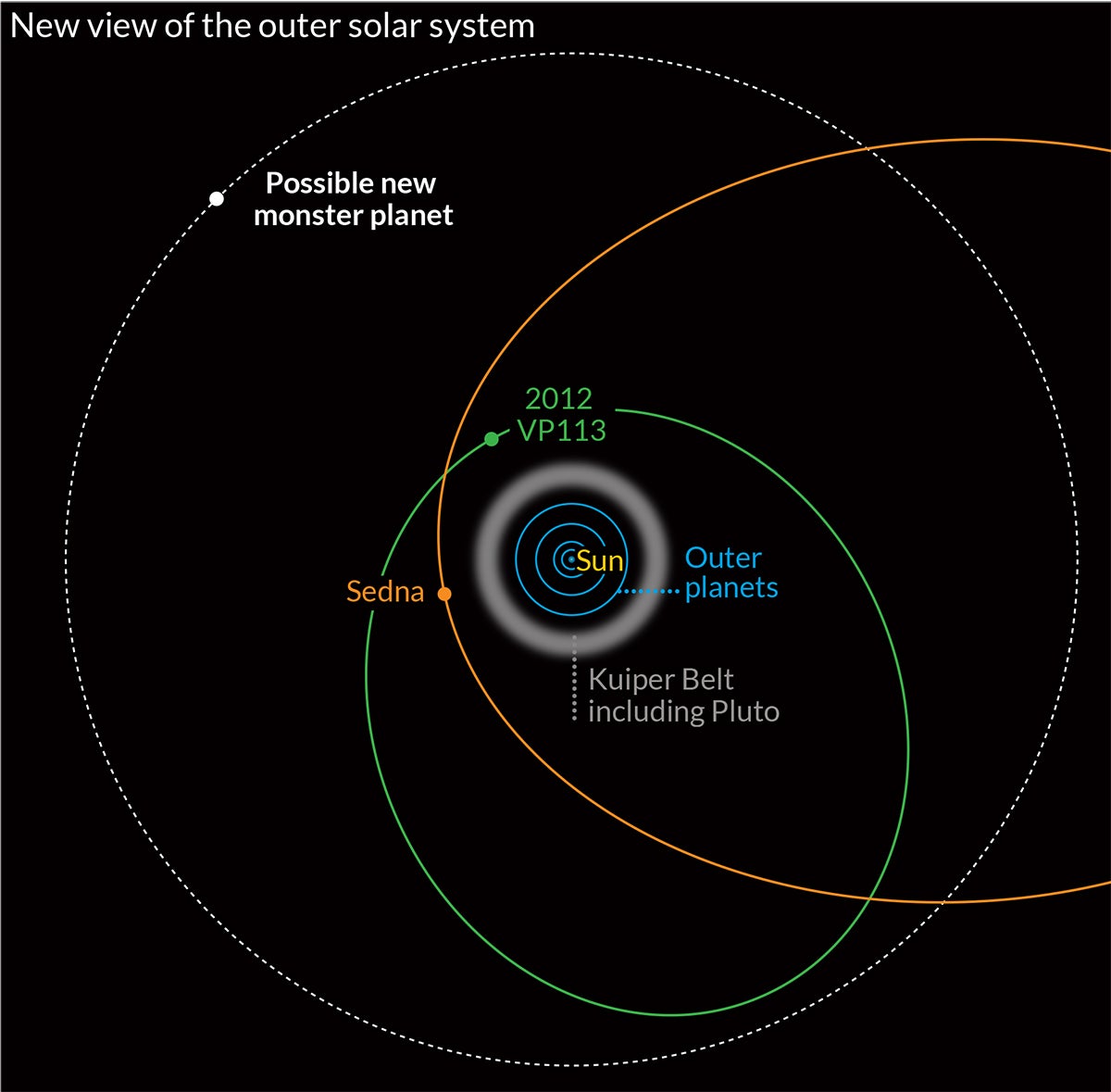| Online: | |
| Visits: | |
| Stories: |

| Story Views | |
| Now: | |
| Last Hour: | |
| Last 24 Hours: | |
| Total: | |
Newly Discovered Dwarf Planet Orbits Sun Every 4000 Years
Astronomers just announced the discovery of a dwarf planet that trumps Sedna as the object in our solar system most distant* from our sun. However, what’s potentially more interesting is what the planet’s orbit suggests: another giant, rocky world at the far edge of our Solar System.
But let’s start with what we do know. The newly discovered dwarf planet — dubbed 2012 VP113, for now — is only 280 miles-wide but is a whopping 7.4 billion miles from the Sun. That makes its orbit obscenely long. It takes over 4,000 years for it to circle the Sun just once. The new dwarf planet is slightly further away than Sedna (pictured in the artist’s rendition below), but it might not be the furthest object from the Sun for long.
The odd alignment of 2012 VP113′s orbit actually suggests that there’s something massive even further out. Based on their measurements, astronomers think it could be a rocky planet about ten times the size of Earth. Such a world would not have been noticed by NASA’s Wide-field Infrared Survey Explorer (WISE) which scoured the area a couple years ago in search of the elusive Planet X, because it wouldn’t generate enough heat for the telescope to notice it.
Of course, there are other explanations for 2012 VP113′s orbit. The news is nevertheless exciting because it offers more clues about what’s going on in the Oort Cloud, that cluster of rock and ice that’s floating millions of miles beyond Neptune. It’s actually getting kind of crowded out there. [Nature via Discover]
Read full story at http://www.gizmodo.com.au/2014/03/newly-discovered-dwarf-planet-suggests-planet-x-exists-after-all/








Zach Sitchin vindicated NIBIRU Annunaki are coming conspiracy theorists were right again those of you who mocked them will suffer worst
You’re misreading this (assuming you read it at all). Conspiracy addicts talk about “Nibiru” as a large planet that swings into our solar system close enough to affect Earth (i.e., inside the asteroid belt). The hypothesis described by this story refers to a large planet in a wide orbit that never brings it inside the orbit of the Kuiper belt (way beyond Pluto), let alone to the inner solar system.
Any kind of planet that swings in so close to Earth to be noted in by humans would have a permanent, noticeable affect on the orbit of the other planets. That is, the orbits we know and see now would be impossible in the presence of something like Nibiru.
I completely agree my friend When someone like Mr.Sitchin spends most of his life researching the Sumerian race and finds links in the bible, that ALL tally! They are coming back to set things right again…
When someone like Mr.Sitchin spends most of his life researching the Sumerian race and finds links in the bible, that ALL tally! They are coming back to set things right again…